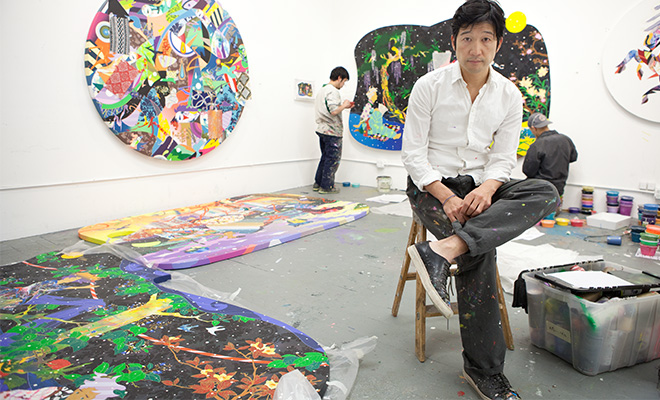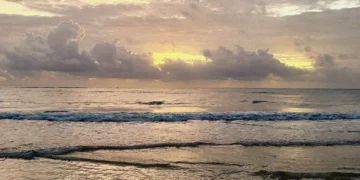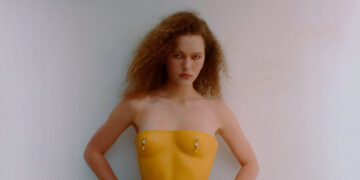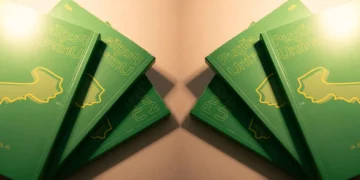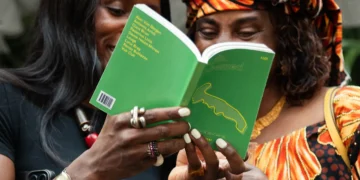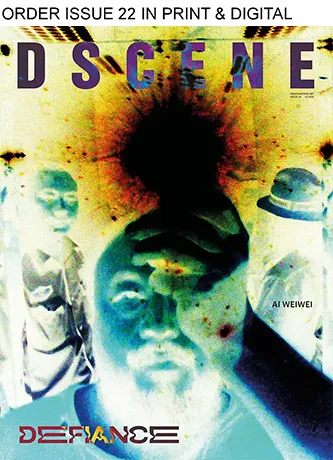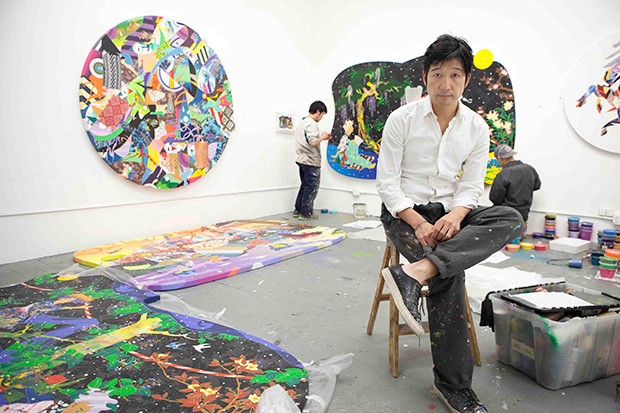
For the May issue of DESIGN SCENE our editor KATARINA DJORIC sits down for an interview with TOMOKAZU MATSUYAMA, one of today’s most creative contemporary artists on the art scene. We talked about today’s art world, working in the United States, the influence of Japan on his work as well as his collaboration with fashion industry’s giants.
GET YOUR COPY IN PRINT $23.90 OR DIGITAL $2.90
Read more after the jump:
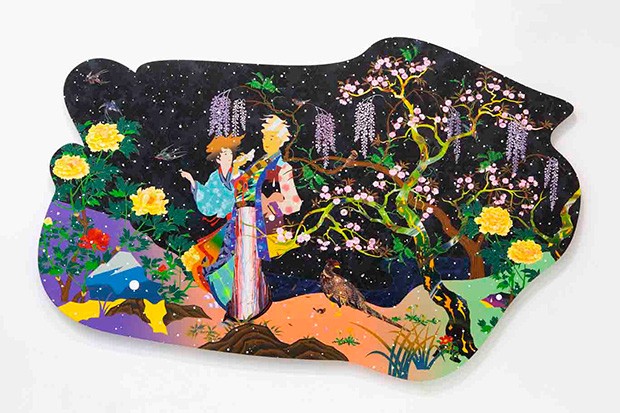 All the way departure (2016)
All the way departure (2016)
You first studied business school in Tokyo. How did you decide to enroll in graphic design and how did that lead you to painting?
After graduating from Business school in Japan, where majority of Japanese population become company workers known as Salary man, therefore I really didn’t think there would be an option of becoming a fine artist as a profession, as I had not known of anyone back home.. I felt becoming a designer would be more realistic in being creative and being able to sustain a living, However, once I moved to NY, I was fortunate to meet artists of the same generation who were doing it full time. They were artist like KAWS, David Ellis, Jose Parla, etc.. They gave me the motivation to pursue a career as an artist.
Do you think that your lack of formal art training actually helped you in your art practice?
I guess it did, as this lack of knowledge over time led to building up unique visual vocabulary.
I never thought I had to focus on thinking different, but when you don’t learn from someone, you are your own teacher, and there are no reference points, so you just had to come up with how to use your own material and tools…it did help now that I look back.
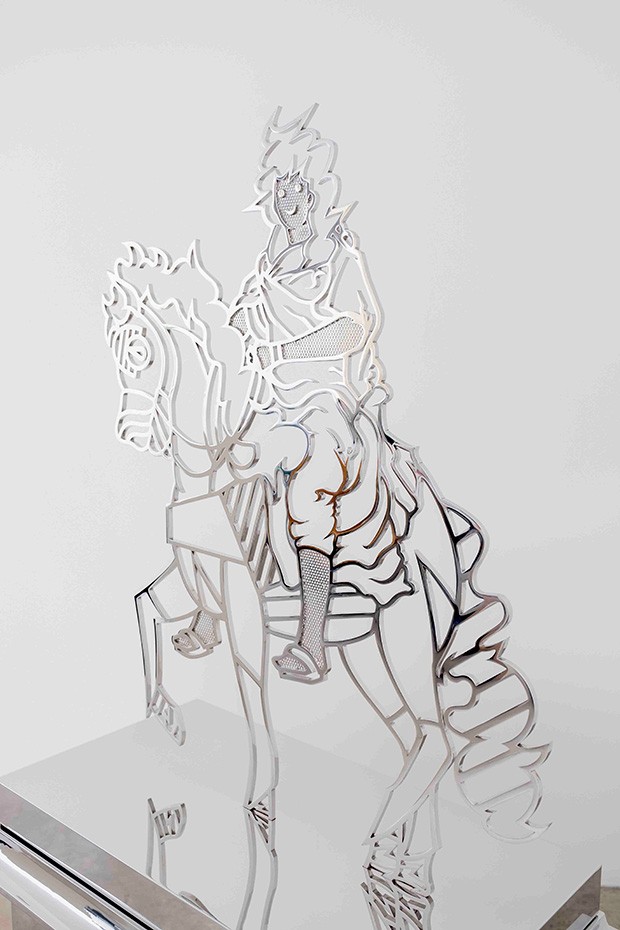 Heavy Metal (2015), Zidoun-Bossuyt Gallery in Luxembourg
Heavy Metal (2015), Zidoun-Bossuyt Gallery in Luxembourg
You grew up both in Japan and the United States. How much has such a bi-cultural experience shaped you as an artist?
I never really had a home, going back to Japan at age of 12 after being in U.S for four years was actually a stronger culture shock than when I moved to U.S, as I was never able to fully adjust myself back to Japanese in the classical sense, but at the same time, I really didn’t feel U.S being my home after returning later in life as they saw me as Asian or Japanese for the nature of how I look and the color of my skin. After all my mother tongue was not English. This struggle remained strong yet subtle which led to my conceptual interest when it came to art.
You combine traditional Japanese art with American Pop Art. How do you find the perfect balance between East and West in your art?
To be honest, that’s really not my interest. The whole approach or interest in my work is to question about our identity. And its about Us not Me. And to do that, I had to use what I have experienced, so I can be honest. But I have no intention to reveal my own persona and talk about myself using my work as a tool. To avoid being subjective, I am including a variety of signifiers that express or discuss about who we are in general. In other words, I try to gather as many bi-polar aesthetic as possible within my work such as, tradition against trends, academicals and historical against popular culture, Eastern and Western sensibilities, decorative and craft oriented meets conceptual approaches. Simply what makes our times interesting is the diversity after what digital technology has nurtured. The aftermath.
That said, it’s not about the balance of East and West.
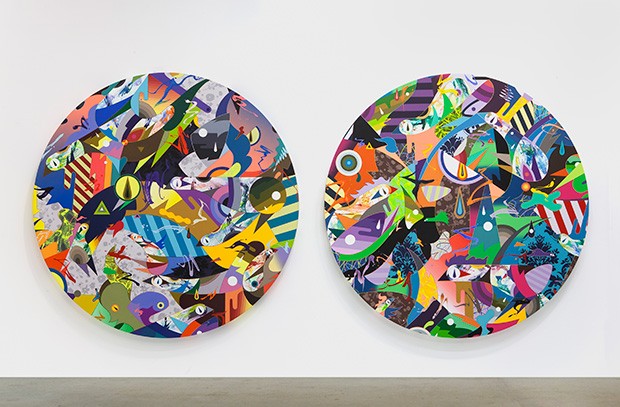 Sundance installation view 2016
Sundance installation view 2016
You said that your work is more than just interesting imagery. How important is narrative for you?
My work is generated under the concept of an imaginary landscape, its all artificial, meaning its not about creating a narrative even though I do get asked a lot, as there are figures in them. For me it more of my perception of the place we live, like I noted earlier. In order to bring objectivity to how I see the world so my works will better communicate, I use references from Japanese wood block prints, NY school Abstract Expressionist, to masters like Picasso but also popular cultures such as random textile patterns I see in current fashion magazines to traces of street art, and collage them very roughly in photoshop then its redrawn and painted.
In your portfolio you have collaborations with fashion industry giants such as LEVI’s and Nike. Do you think an artist today should be open to such collaborations even though commercial clients often come with limiting requests?
It all depends, I only work on projects where I can build a concept together, or whether they be a team where counter proposal are accepted or work with people that know the nature of how fine art world functions. I’m very uninterested in building someone else’s brand image or for marketing.
For me the purpose that I do collaborate is that, art can be accessible and our generation has this unique strength to be applied to commodity yet, a painting or a sculpture could be in a museums collection. Academic significance can be accessible and popular.
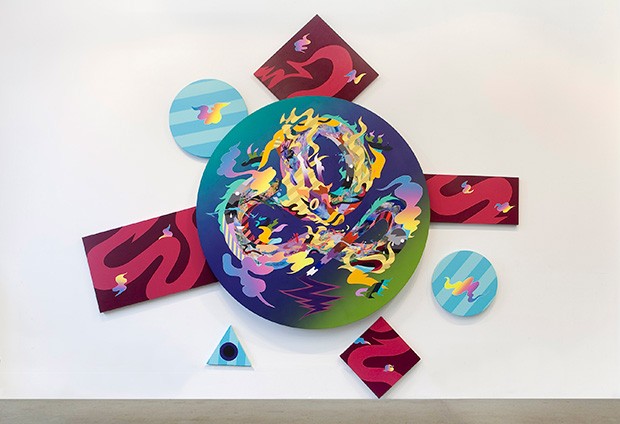 Permanent traveler (2013)
Permanent traveler (2013)
Were you approached by any fashion brands to translate your artwork into garment prints? And do you have any favourite fashion brands you would easily see yourself collaborating with on such a project?
I am interested in working with fashion designers more now as I’ve worked with larger corporations like Nike and Levi’s, etc.. I would be interested in working with a designer on a further intimate level.
You mostly work with large formats as well as curved canvases. Do you have assistants in your atelier or do you manage it all by yourself?
I have a full running studio with studio manager and several assistants. My paintings take months to finish, if I work alone, I can paint only a couple per year.
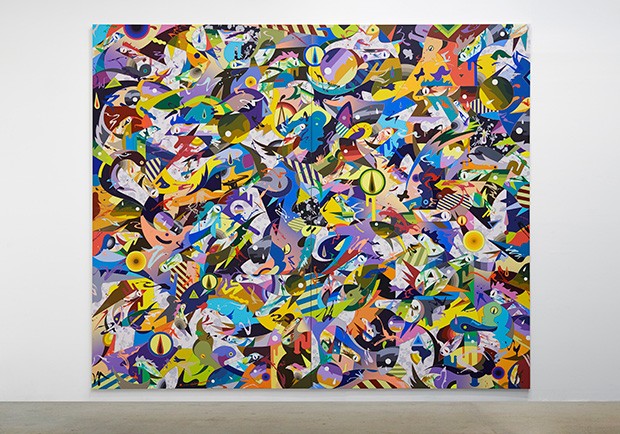 You Need To Come Closer (2014)
You Need To Come Closer (2014)
How does the path from an idea on the drawing board to a final art piece look like for you?
One piece navigates to the next, and idea organically and slowly develops over time. The more you make the better you become, my works either have single reference or if its more complex, its collaged with various images in photoshop and I would redraw them and paint. I’ve never had a painting where the finished piece is pre-rendered. That is just not the nature of my studio practice and how I produce, decision making are quite intuitive and are being made as the works are being built.
Your sculptures are mostly made of monochromatic steel and quite different from your paintings, is such a stark difference intentional?
There are actually lots of colorful sculptures I have made in the past using fiberglass, but recent bodies of sculptures are monochromatic steel. I became interested in playing with image distortion and the idea of varying perceptions of reality. The viewers are invited to create their own interpretation and experience of the work. Thus the viewers become a part of the work, transported into the creative dialogue that relates with our identity. Viewers themselves become a part of it.
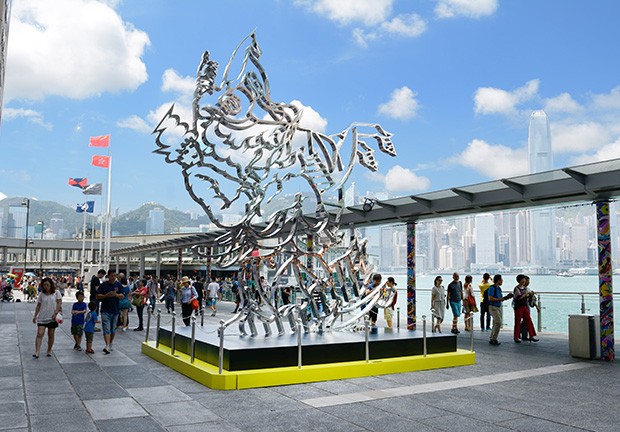 Harbour City (2014)
Harbour City (2014)
Did the international recognition of your work in any way change your every-day routine?
Phone calls are so not easy to organize, when you work with Asia, Europe, Australia and U.S.
Do you draw inspiration from other art forms such as film or music? And are there any albums or films you would recommend?
Music I supposed, as ears become significantly free when you paint. Depending on what type of work I’m creating or what process I’m going through I listen to different music, from Jazz, House, Hip Hop alternative and some Pop music.
Keep up with Tomakazu at www.matzu.net and instagram @tomokazumatsuyama
